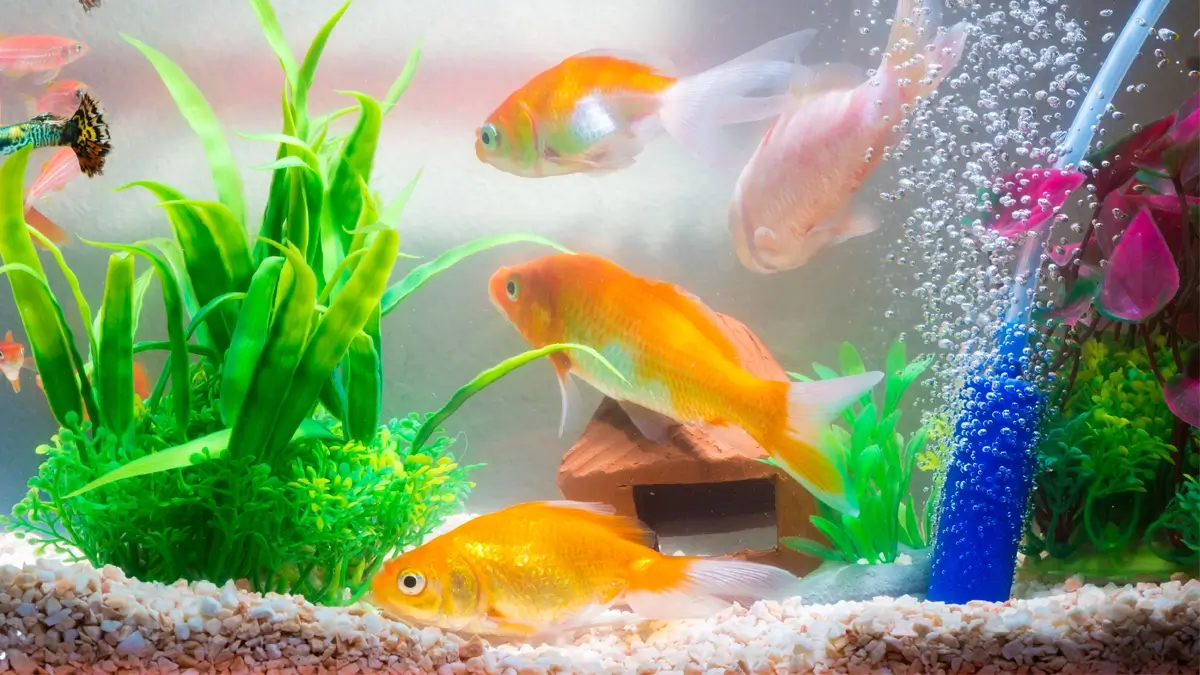Goldfish are pretty much the most popular pet fish on the planet, especially with kids.
Traditionally, goldfish were kept in round bowls, often without filtration.
But is it cruel to keep a goldfish in a bowl? What kind of fish tank should a goldfish be kept in? And how many goldfish can you keep in a tank?
Keep reading our ultimate guide to goldfish tanks to learn what kind of fish tank you should choose for your goldfish pets in our goldfish tank guide.
If you want to read more relevant guides on goldfish tanks, click the button below.
Key Takeaways:
- Tank Size: Goldfish need a minimum of 20 gallons for one fish, with 10 additional gallons per fish. For slim-bodied types like Comets, 30 gallons is recommended.
- Tank Shape: Rectangular tanks are ideal, as they provide more surface area for oxygen exchange, which is crucial for goldfish.
- Water Parameters: Goldfish prefer cool water (61°F-77°F), with a pH between 6.0-8.0 and low levels of ammonia/nitrites.
- Filtration: A powerful filtration system is essential due to the high waste production of goldfish. Regular water changes are necessary.
- Decorations: Use smooth gravel, driftwood, and live plants like Java Fern or Anubias. Avoid sharp ornaments that could injure goldfish fins.
- Tank Mates: Goldfish do well with other goldfish or compatible coldwater fish like Rosy Barbs and White Cloud Mountain Minnows. Avoid aggressive fish.
- Breeding: Goldfish breed easily in a separate spawning tank, with water temperature gradually increasing for successful spawning.
- Lifespan: Goldfish can live 10-15 years, and up to 20+ years with optimal care.

What kind of tank should a goldfish live in?
Ideally, goldfish should live in a rectangular tank.
As previously mentioned, goldfish are oxygen-hungry fish. A rectangular tank offers sufficient surface area for good gaseous exchange to take place, whereas in a tall tank or bowl, the surface area is limited.
Slim-bodied goldfish are good swimmers, and a rectangular tank offers more swimming space than a tall one.
Egg-shaped Fancy goldfish types are generally dreadful swimmers, wobbling around the tank and getting nowhere fast! A shallow, rectangular tank makes it much easier for the fish to get to the surface to feed.
For the reasons outlined above, your goldfish tank should always have a lid or cover slide.
What size goldfish tank do I need?
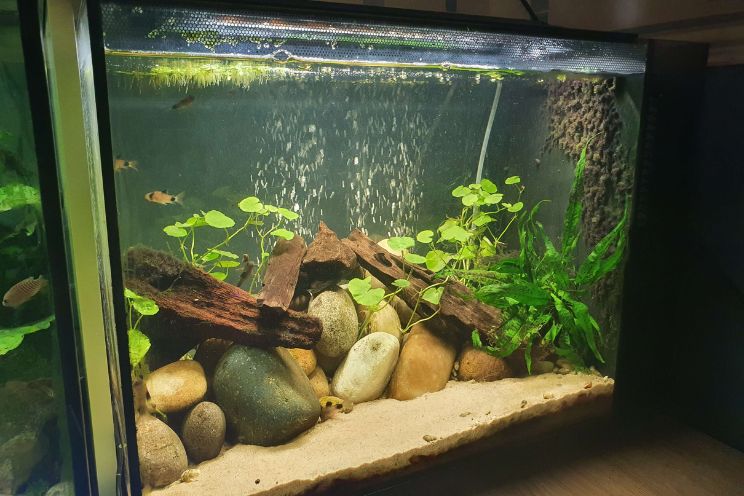
Goldfish require a minimum tank size of 20 gallons and 3 feet in length for one Fancy goldfish that will grow to around 6 to 8 inches in length. Add a further 10 gallons per additional fish.
Slim-bodied goldfish, such as Comets, require more space than that since they can grow up to 12 inches long! We recommend a 30-gallon tank of at least 4 feet long for one fish.
For every additional fish, you’ll need to add 12 gallons. Although you can keep these fish in a tank, they are better suited to life in a spacious garden pond.
A great starter tank set-up we would recommend is below:

How many goldfish should you have in a tank?
Goldfish are gregarious, sociable creatures that enjoy the company of their own kind. In theory, you can keep large or small groups of fish, depending on the size of your aquarium.
When calculating the capacity of your fish tank, please remember that the fish you buy in pet stores are juveniles of just a few months old.
Those tiny inch-long tiddlers very quickly grow and in just a few months, can double or even treble in size! Always calculate your aquarium’s capacity based on the adult size of the fish you intend to buy.
How do you introduce new goldfish to a tank?
You need to be careful when introducing new goldfish to your tank. You need to ensure that your new friends don’t become stressed and acclimate to their new environment well.
Our guide to introducing fish to your new tank runs through this process.

How to set up a goldfish tank
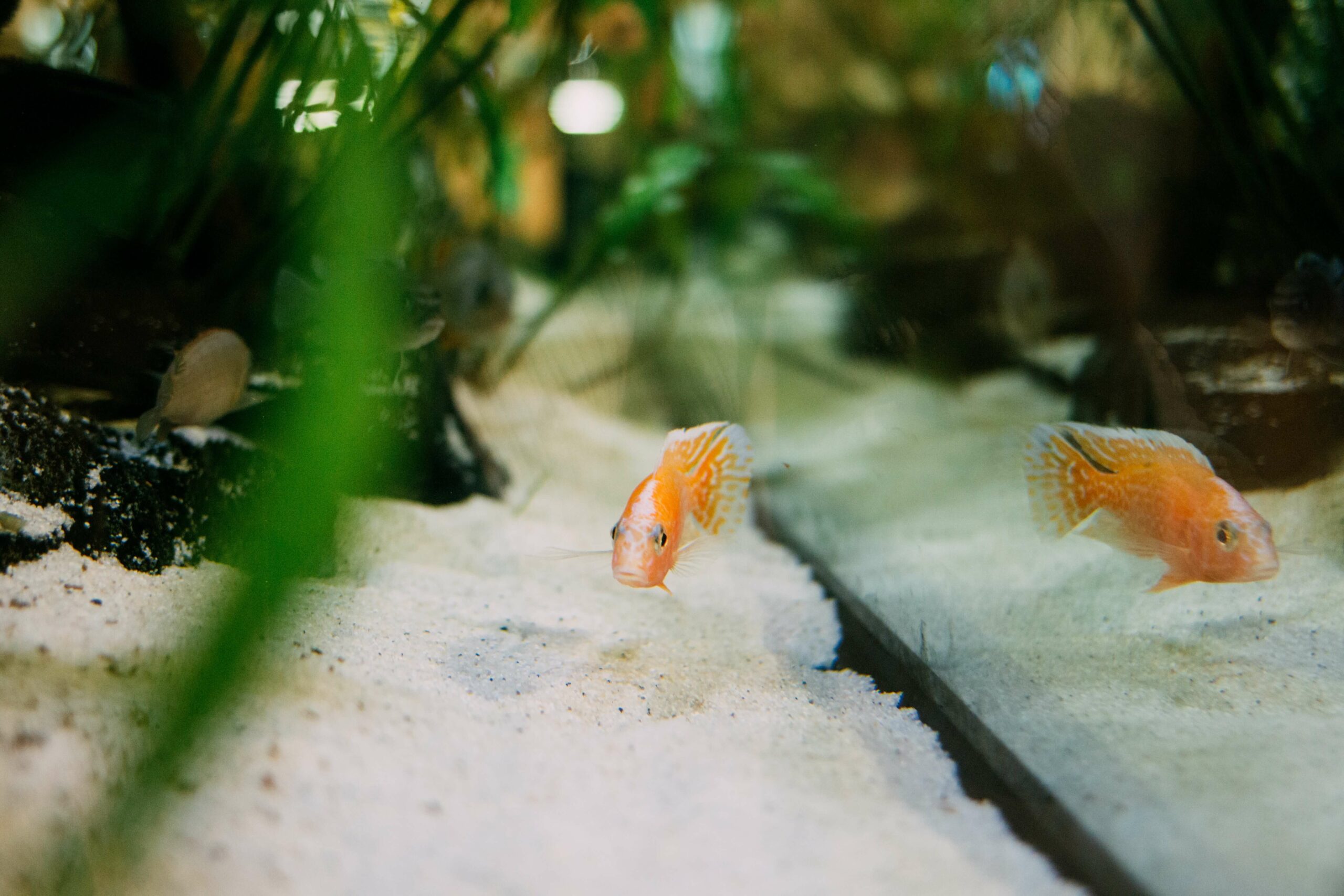
So, now you have your new goldfish tank, how do you set it up? The first crucial thing to know is that you can’t simply fill the tank with gravel, add a few plants and decorations, and fill the tank with tap water!
Although your new setup might look great, your fish will almost certainly die if you put them straight into the tank without cycling it properly first.

Aquarium Water Testing Kits
Before you set up your fish tank, you’ll need to buy a range of aquarium water testing kits that you’ll use to check the levels of ammonia, nitrite, and nitrate in the water.
Once your tank is set up, you’ll need to test the water every day to monitor the progress of the cycling process so that you know when it’s safe to add your goldfish.
Here are the main aquarium water testing kits that we recommend getting:
- Ammonia test kit
- Nitrite test kit
To ensure that the results of the tests are accurate, read the manufacturer’s instructions thoroughly before you start. Ideally, you want zero ammonia and nitrites and a maximum nitrate level of 30ppm.
The Nitrogen Cycle
The Nitrogen Cycle is a hugely important factor to understand when setting up a fish tank. Our detailed guide talks all about this cycle and what you’ll need to know and do when starting out.

How long before I can put goldfish in my tank?
Generally, it takes between two and six weeks for a fish tank to be fully cycled. You can speed up the cycling process by “seeding” your tank with a mature substrate, plants from an established tank, and a few drops of pure ammonia.
Once the levels of ammonia and nitrite are zero and nitrates are 30ppm or less, you can add your goldfish.
We recommend that you start with two fish. After a couple of weeks, you can add more, provided that the tank is large enough and the water parameters have remained stable.
Goldfish Tank Equipment
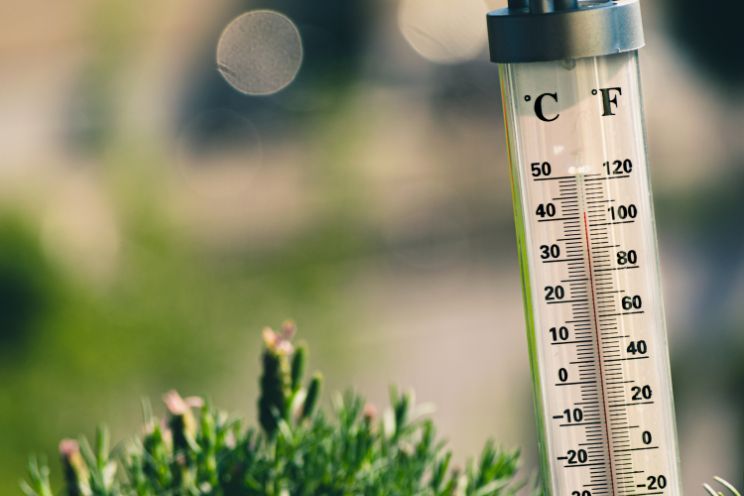
As well as a goldfish tank, you’ll need to buy the following items:
- Filtration system and filter media
- Air bubbler
- Lighting unit
- Aquarium vacuum cleaner
- Bucket
- Dechlorinator
- Algae scraper
- Selection of filter cleaning brushes
- Substrate
- Living plants
- Decorations
- A fish net
- Water testing kits
- Aquarium thermometer
- Goldfish flake and pellet foods, frozen meaty protein foods
Goldfish are a coldwater species, so you won’t need a heater for your fish tank.
You can save quite a lot of money by buying one of the many fish tank starter kits that are available on the market. Starter kits generally contain the fish tank and a lid or cover slide, a lighting unit, a filtration system, and some replacement filter media.
Some kits also include some fish food, substrate, plastic or silk plants, and an ornament.
Starter kits are the best choice for a beginner to the hobby, as they offer good value and take the guesswork out of assembling your setup.
However, once you have more experience, you might want to buy a basic tank and customise it with your preferred filter system, lighting, etc.

What temperature should a goldfish tank be?
Goldfish are coldwater fish that need a water temperature of between 61°F to 77°F (16°C to 25°C).
As well as temperature, you should [pay attention to other water parameters. The pH range should be in the range of 6.0 to 8.0, with a GH of 90 to 340ppm.
Fancy goldfish types generally prefer slightly warmer water than slim-bodied pond types.
As mentioned above, the levels of ammonia and nitrite in the water should be zero, and nitrates should be a maximum of 30ppm, ideally less.

Goldfish Tank Decoration
Goldfish are not found in nature, as these fish are all produced and developed through captive breeding programs. That means you don’t need to provide any specific kind of decoration for your goldfish tank, and you can choose whatever aquascaping theme you prefer to display your fish.
However, there are a few important points to note when decorating your goldfish tank.
What do goldfish like in their tank?
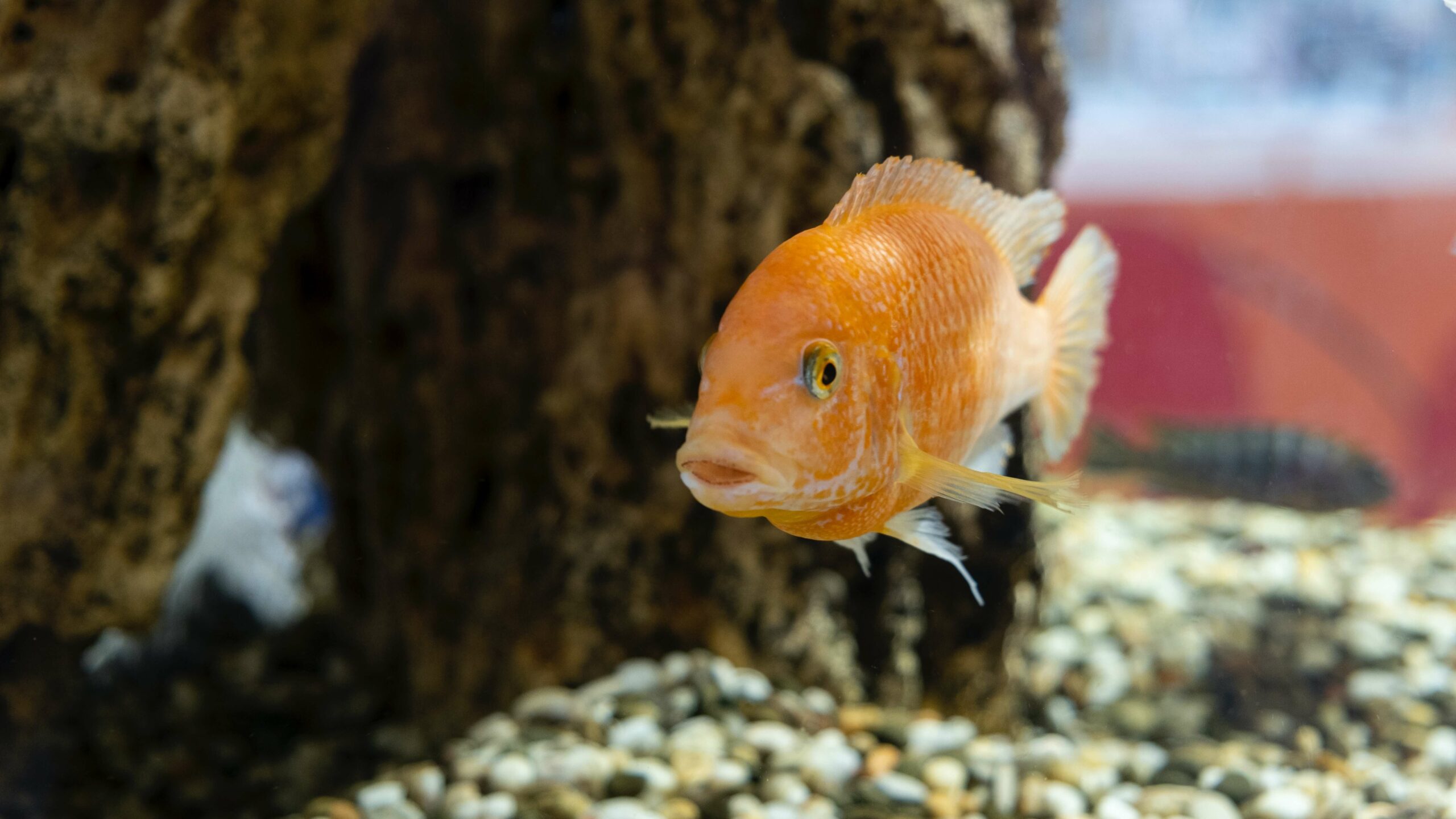
Goldfish enjoy rooting through the substrate in search of scraps of food, and smooth, large gauge gravel works best for them. Steer clear of cheap, novelty-colored gravels, as they tend to contain dye that can leach into the water, potentially harming your fish.
Slim-bodied goldfish are energetic swimmers, darting up and down the tank in a frenzy at feeding times. In contrast, round-bodied fancy goldfish are dreadful swimmers, wobbling around in the water and sometimes bumping into things, including each other!
So, for different reasons, you need to allow plenty of open water swimming space for the fish.
Arrange your decorations and plants around the perimeter of the tank. Fancy goldfish are vulnerable to injury from sharp or rough objects, so choose smooth stones, glass pebbles, and driftwood. Avoid resin ornaments and twisted roots, as both tend to have sharp points and abrasive surfaces.

Adding aquatic plants to fish tanks
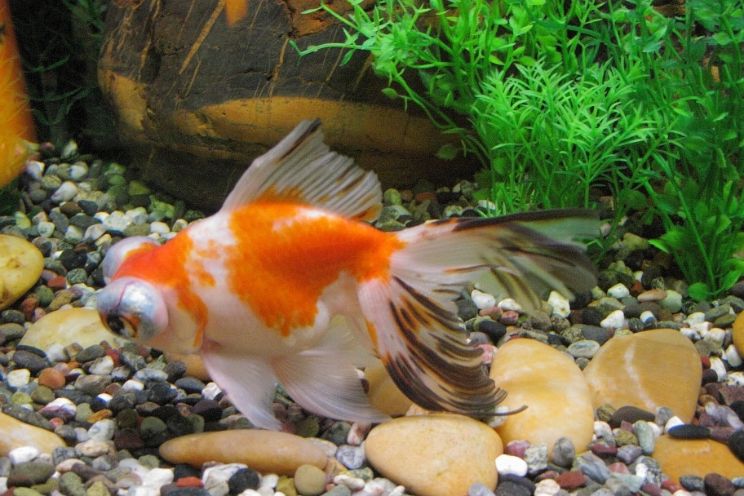
Living plants are preferable to fake ones, as they help to improve the water quality by removing nitrates, absorbing CO2, and producing oxygen.
Goldfish have something of a bad rep when it comes to plants, digging up roots, and nibbling on new growth. So, choose hardy plant species, such as Java fern or Anubias, or go for Marimo Moss Balls, which are virtually indestructible, even to goldfish!
Soft, silk plants can make a good alternative to living plants, but we don’t recommend plastic plants, as they tend to have sharp points that could injure your fish.

How long do goldfish live in a tank?
If provided with a high-quality diet and kept in a clean, well-maintained tank with the correct, stable water parameters, a goldfish can survive for an average of 10 to 15 years.
However, there are cases of fish living for 20 years or even more in exceptional cases.

What fish can live with goldfish in a tank?
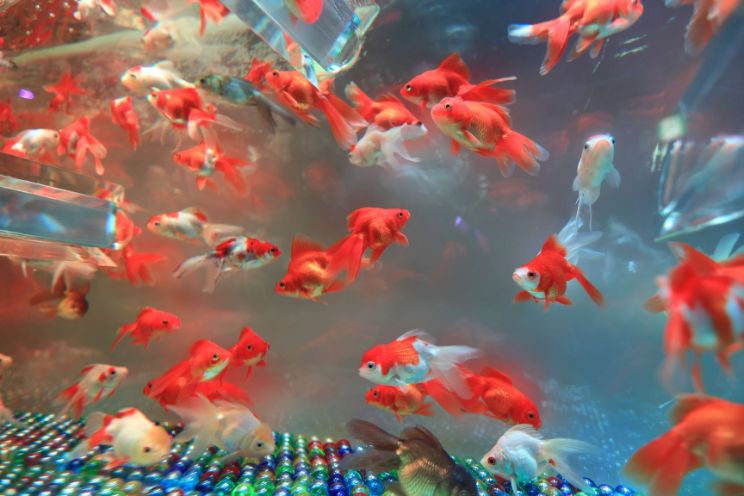
The ideal tank mates for goldfish are other goldfish!
These placid, peaceful fish thrive when kept in groups. However, you should keep goldfish of similar types together rather than mixing them. Slim-bodied goldfish are fast, agile swimmers that can cause injury to slower-swimming Fancies and will outcompete them at feeding times, too. So, we recommend that you don’t mix the two.
Large freshwater snails and shrimp can make an interesting addition to a goldfish tank. However, make sure that any invertebrates you include are not small enough to be eaten!
There are a few coldwater fish species that you can mix safely with goldfish, including:
- Bristlenose Pleco
- Brochis multiradiatus
- Dojo Loach
- Hillstream Loach
- Hoplo Catfish
- Ricefish
- Rosy Barbs
- Rubbernose Pleco
- White Cloud Mountain Minnows
Avoid including aggressive species that could hassle the peaceful goldfish, and check that the fish you want to add to your community can all tolerate the same water parameters.
You also need to know the full adult size of all the fish you’ve included to avoid overcrowding in the future.

How to clean a goldfish tank
Now you have your goldfish tank fully cycled and set up, and you’ve added your goldfish, you’ll need to keep up to speed with cleaning and maintaining the tank.
You’ll need to follow a specific routine using the right equipment to safely clean your fish tank.
Our dedicated post will guide you through the steps of effectively cleaning your tank:

Final Thoughts
I hope you enjoyed our ultimate guide to goldfish tanks. If you did, please take a moment to share it!
Goldfish are social animals that need to live in a group, or at least a pair, to be happy and thrive. So, always buy a tank that’s plenty big enough to accommodate the number of goldfish you want to keep.
Fit the tank with an efficient filtration system to keep the water clean and safe for your fish, and be sure to cycle the tank properly before adding your fish. You’ll need to carry out basic maintenance tasks on your tank, including a partial water change, once a week.
Did you buy a starter tank kit for your goldfish? How long did it take to cycle your tank? Tell us in the comments box below!
FAQs
- What size tank does a goldfish need?
- Goldfish require a spacious environment to thrive. A general rule of thumb is to provide 20 gallons for the first goldfish and an additional 10 gallons for each additional fish to ensure they have enough space to swim and grow comfortably.
- Are goldfish good for an aquarium?
- Yes, goldfish can be excellent aquarium pets. They are beautiful, have distinct personalities, and are relatively easy to care for. However, it’s crucial to understand their specific needs, including tank size, water quality, and suitable tankmates.
- Do goldfish need an air pump?
- While goldfish don’t necessarily need an air pump, adequate oxygen exchange is crucial. A well-functioning filter and surface agitation from a filter outlet or decorations can provide sufficient oxygen. However, in tanks with a high fish load or during warm weather, an air pump and airstone can be beneficial to ensure optimal oxygen levels.
- Can goldfish survive in tap water?
- Goldfish can survive in tap water, but the water quality needs to be carefully considered. Tap water often contains chlorine and chloramine, which can harm fish. It’s essential to treat tap water with a suitable water conditioner to neutralize these chemicals before adding it to the aquarium. Additionally, regular water testing and proper maintenance are key to ensuring a healthy environment for goldfish.
